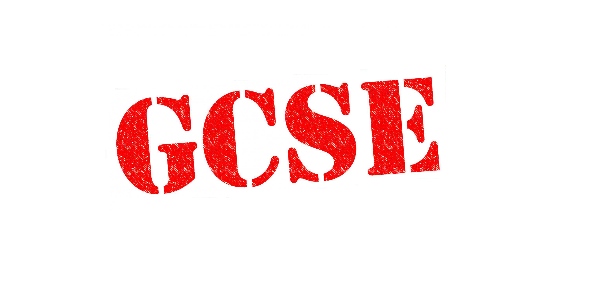Hardyes GCSE Aos1 - Chopin's Raindrop Prelude
-
What genre of music is this piece?
A revision quiz about Chopin's raindrop prelude.

Quiz Preview
- 2.
From which musical period does this piece come?
- 3.
What is the structure of this piece?
- 4.
What key is the A section in?
- 5.
What key is the B section in?
- 6.
Describe the texture in bars 81-83 of the coda.
- 7.
Which word means ' in a singing style'
-
Allegro
-
Sostenuto
-
Cantabile
-
Sehr Rasch
Correct Answer
A. Cantabile -
- 8.
How many preludes did Chopin compose?
-
12
-
18
-
24
-
32
-
48
Correct Answer
A. 24 -
- 9.
From which country did Chopin come?
-
England
-
France
-
Germany
-
Poland
-
Hungary
Correct Answer
A. Poland -
- 10.
What does smorzando mean?
-
Sustained
-
Slurred
-
Dying away
-
Getting louder
Correct Answer
A. Dying away -
- 11.
Which word means 'to slow down gradually'.
-
Ritenuto
-
Diminuendo
-
Sostenuto
-
Rubato
Correct Answer
A. Ritenuto -
- 12.
Which of the following are performance techniques that are used in this piece? (tick 4 that apply)
-
Use of rubato
-
Use of sustain pedal
-
A large range of dynamics
-
Staccato playing
-
Cantabile melody
-
Lots of trills
Correct Answer(s)
A. Use of rubato
A. Use of sustain pedal
A. A large range of dynamics
A. Cantabile melody -
- 13.
Which of the following apply to the B section? (tick all that apply)
-
Inverted dominant pedal
-
Melody in left hand
-
Use of dotted rhythms
-
Melody moves in crotchets
-
Falling melody
-
Homophonic
-
Polyphonic
-
Dramatic range of dynamics
Correct Answer(s)
A. Inverted dominant pedal
A. Melody in left hand
A. Melody moves in crotchets
A. Homophonic
A. Dramatic range of dynamics -
- 14.
Which of the following are general features of music from the Romantic period? (tick all that apply)
-
Large dynamic range
-
Simple functional harmony
-
Use of Chromaticism
-
Atonal
-
Use of Rubato
-
Extended chords
-
Use of folk tunes and rhythms
-
Minor keys
-
Large orchestras with lots of brass and percussion
-
Basso continuo
-
Programme music is popular
-
Very expressive music
Correct Answer(s)
A. Large dynamic range
A. Use of Chromaticism
A. Use of Rubato
A. Extended chords
A. Use of folk tunes and rhythms
A. Large orchestras with lots of brass and percussion
A. Programme music is popular
A. Very expressive music -
- 15.
Which of the following apply to the A section? (tick all that apply)
-
Falling melody
-
Dominant pedal
-
Loud dynamic
-
Melody sometimes in 6ths
-
Septuplets
-
Acciaccatura
-
Melody in crotchets
-
Cantabile melody
-
Melody Dominated Homophony
-
Inverted Pedal
-
Melody in left hand
-
Melody in right hand
-
Use of dotted rhythms
Correct Answer(s)
A. Falling melody
A. Dominant pedal
A. Melody sometimes in 6ths
A. Septuplets
A. Acciaccatura
A. Cantabile melody
A. Melody Dominated Homophony
A. Melody in right hand
A. Use of dotted rhythms -
Quiz Review Timeline (Updated): Mar 20, 2022 +
Our quizzes are rigorously reviewed, monitored and continuously updated by our expert board to maintain accuracy, relevance, and timeliness.
-
Current Version
-
Mar 20, 2022Quiz Edited by
ProProfs Editorial Team -
Apr 14, 2011Quiz Created by
Music
What GCSE Should I Take?
Play the "What GCSE Should I Take?" quiz to get an answer to your questions about what your GCSE subject should be. We all love some subjects more than others. We are...
Questions:
10 |
Attempts:
24589 |
Last updated:
Apr 23, 2025
|
GCSE: Trivia Quiz On Textile Technology! Test
What do you know about textile technology? Do you think you know as much as necessary to pass this quiz? Textile technology is a division of engineering in which principles and...
Questions:
42 |
Attempts:
1329 |
Last updated:
Mar 04, 2024
|
Would You Pass Your GCSE History Exam If You Sat It Today?
Were you a history geek or did you daydream through your lessons? Reckon you would still pass your GCSE history exam today - take our quiz to find out.
Questions:
10 |
Attempts:
285 |
Last updated:
Mar 21, 2023
|
 Back to top
Back to top





